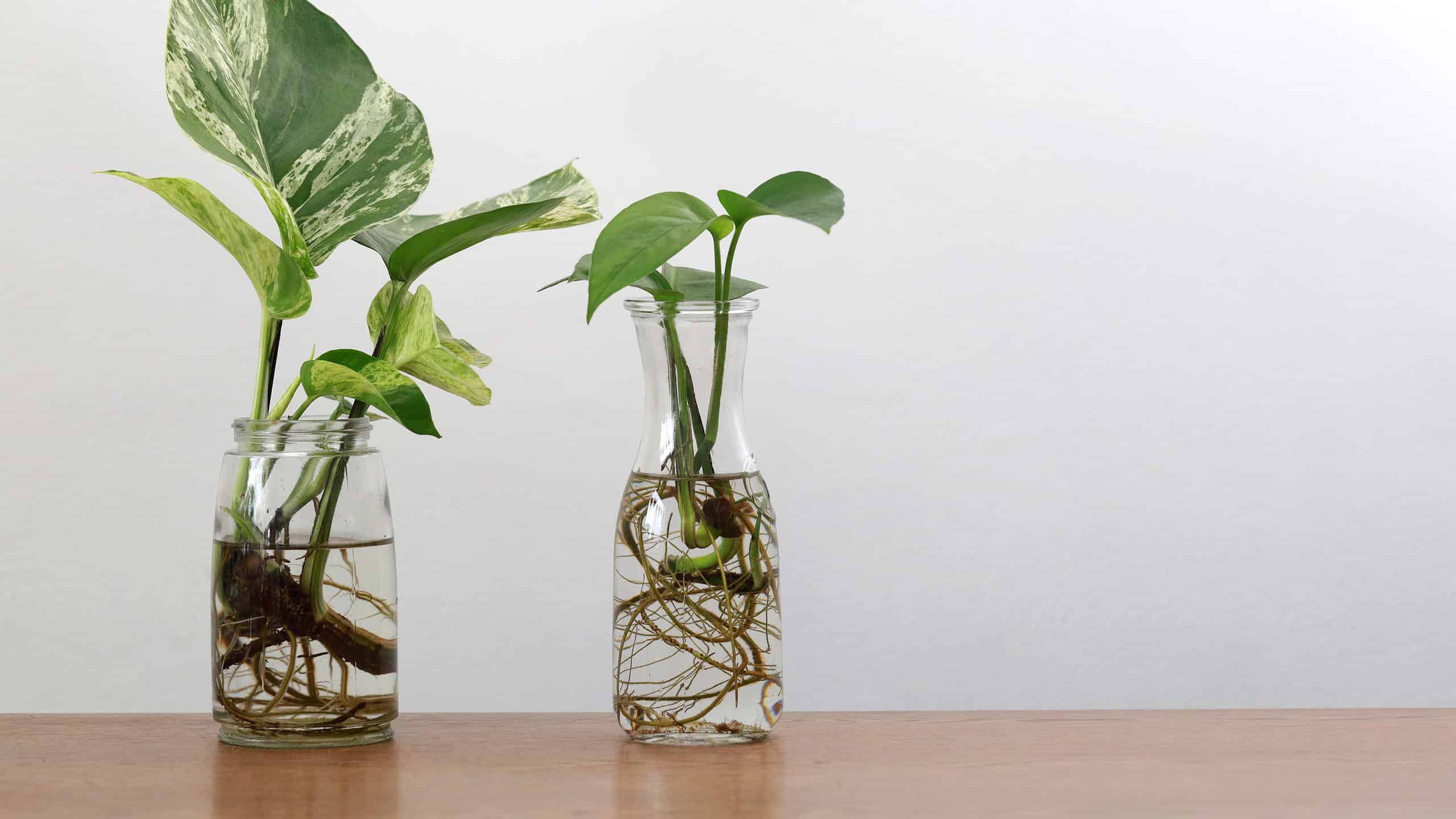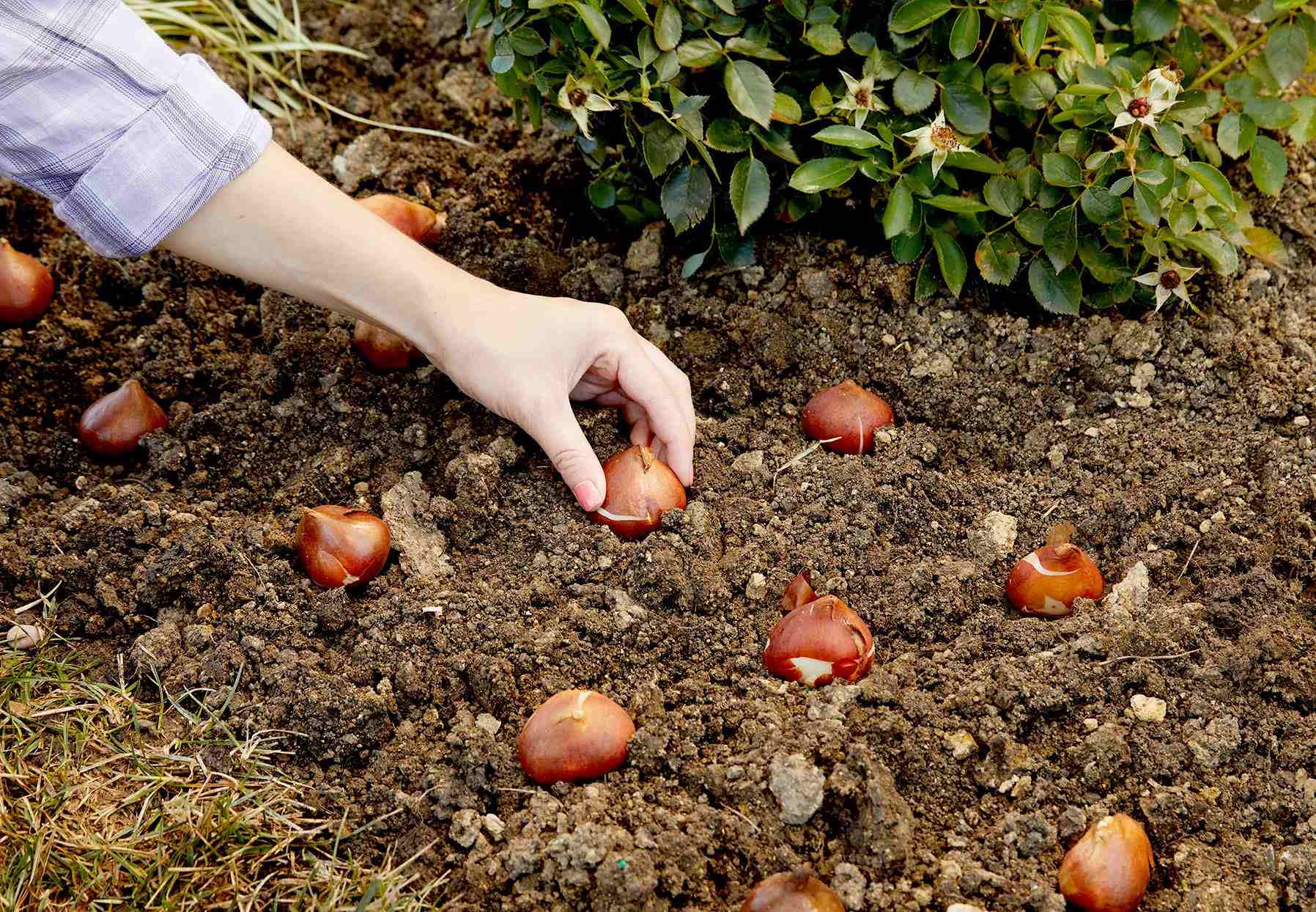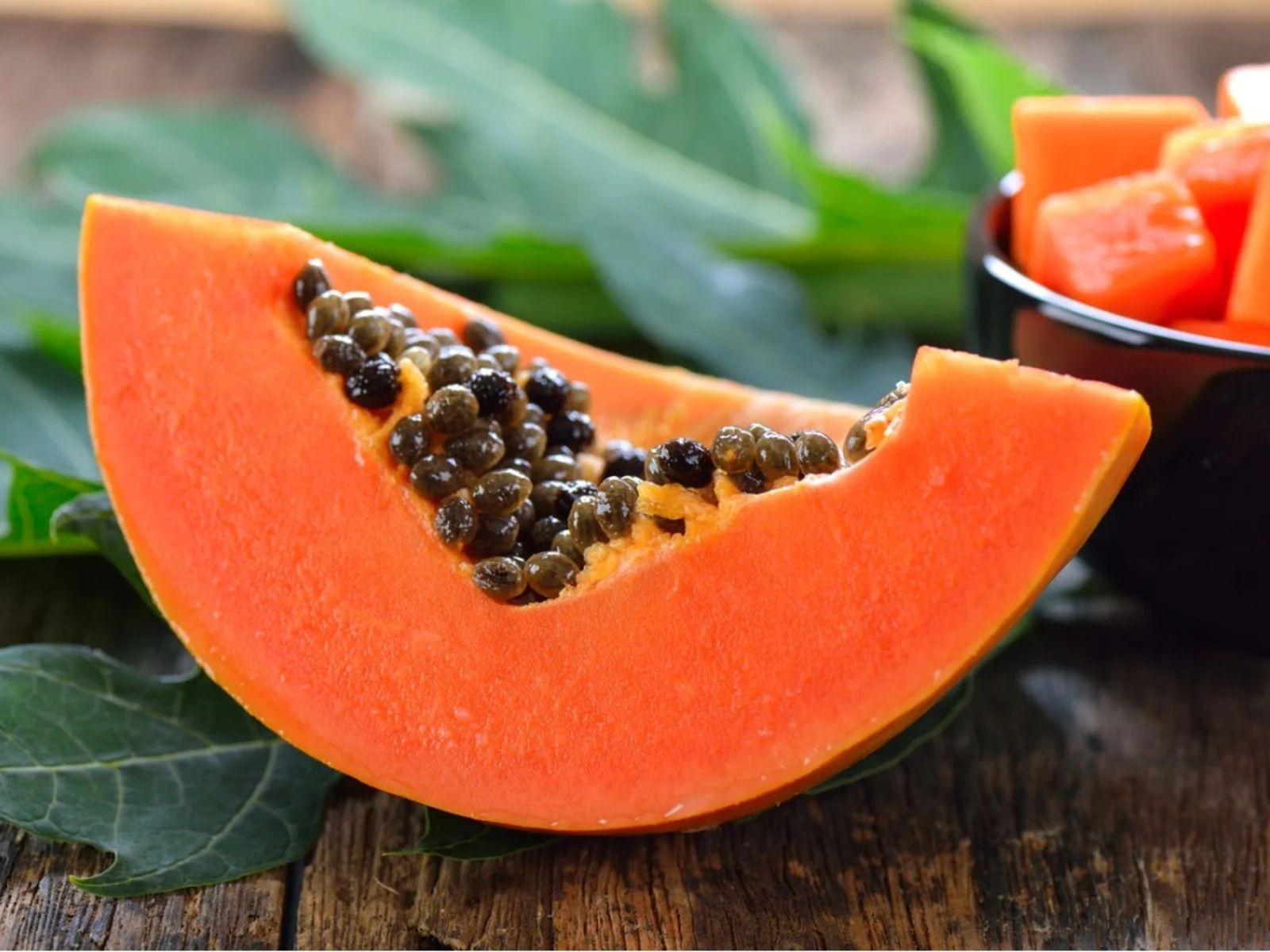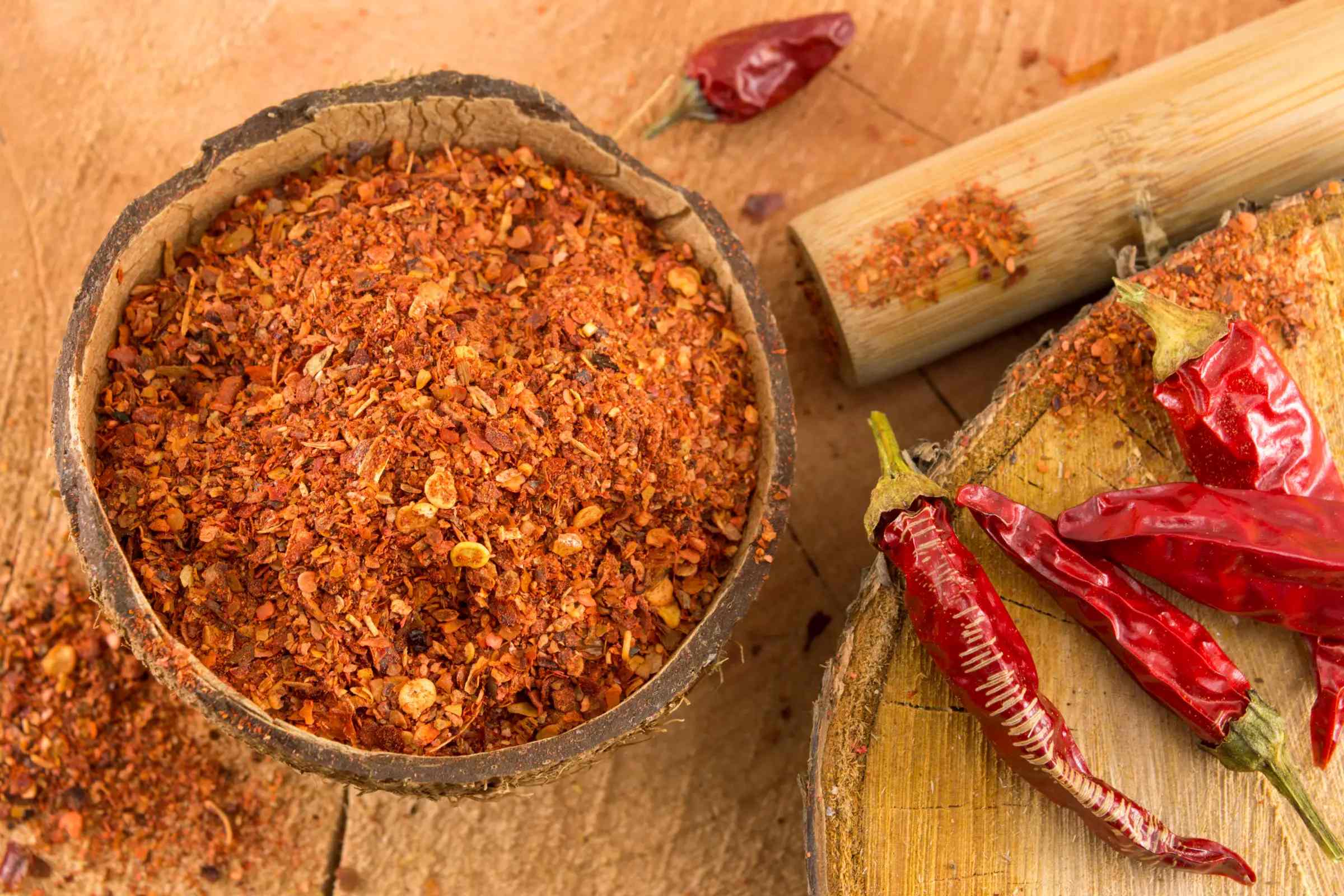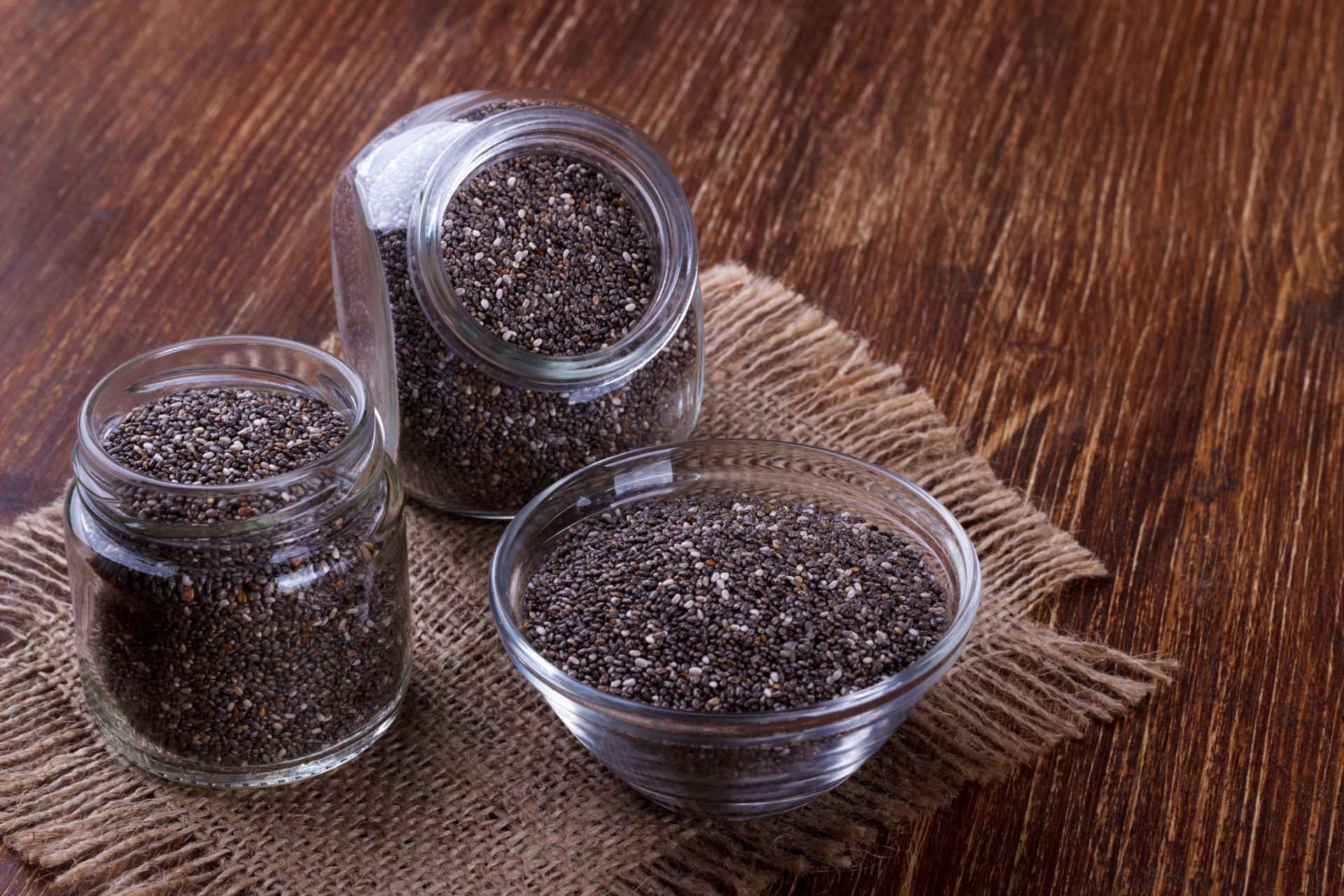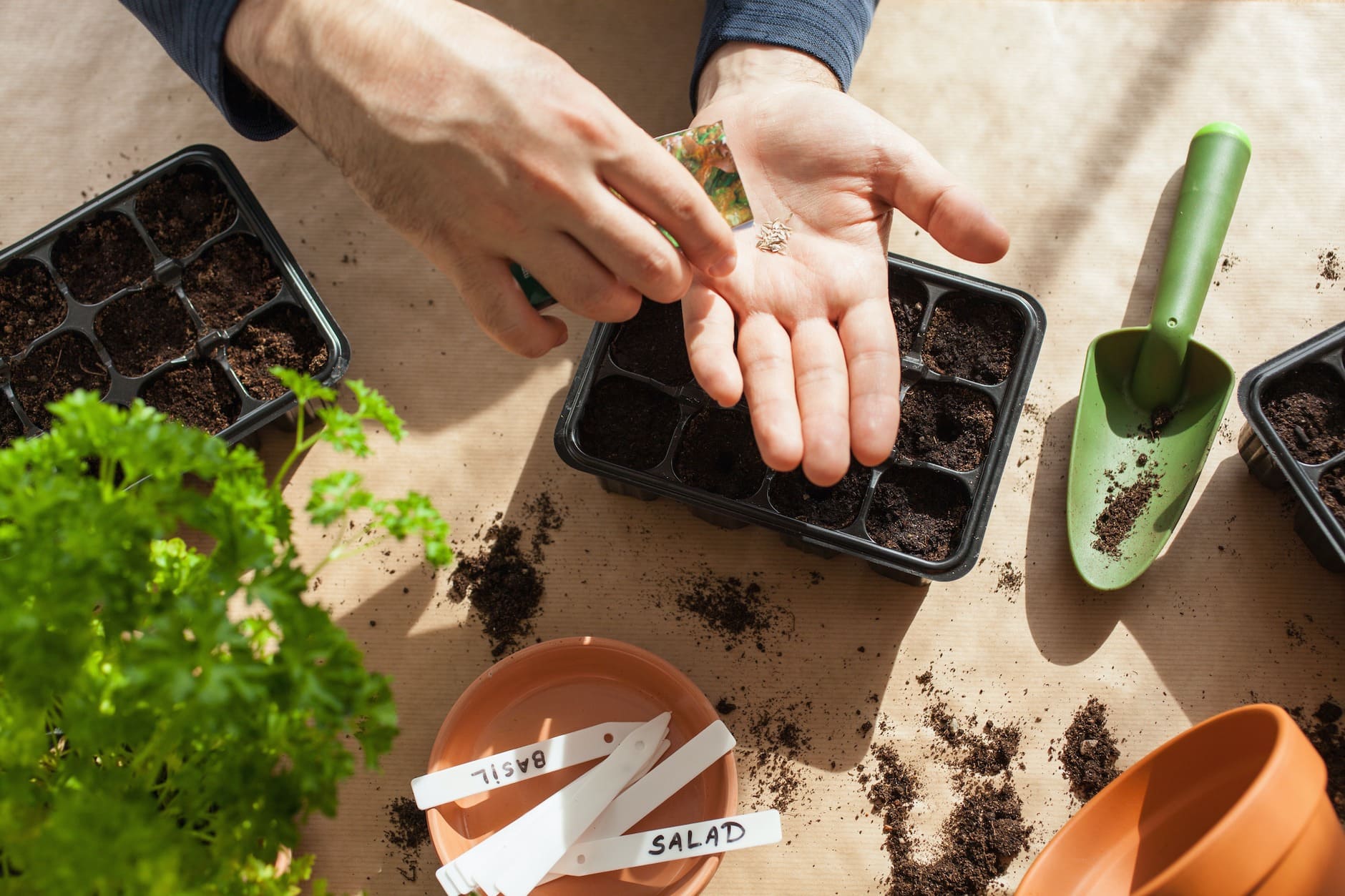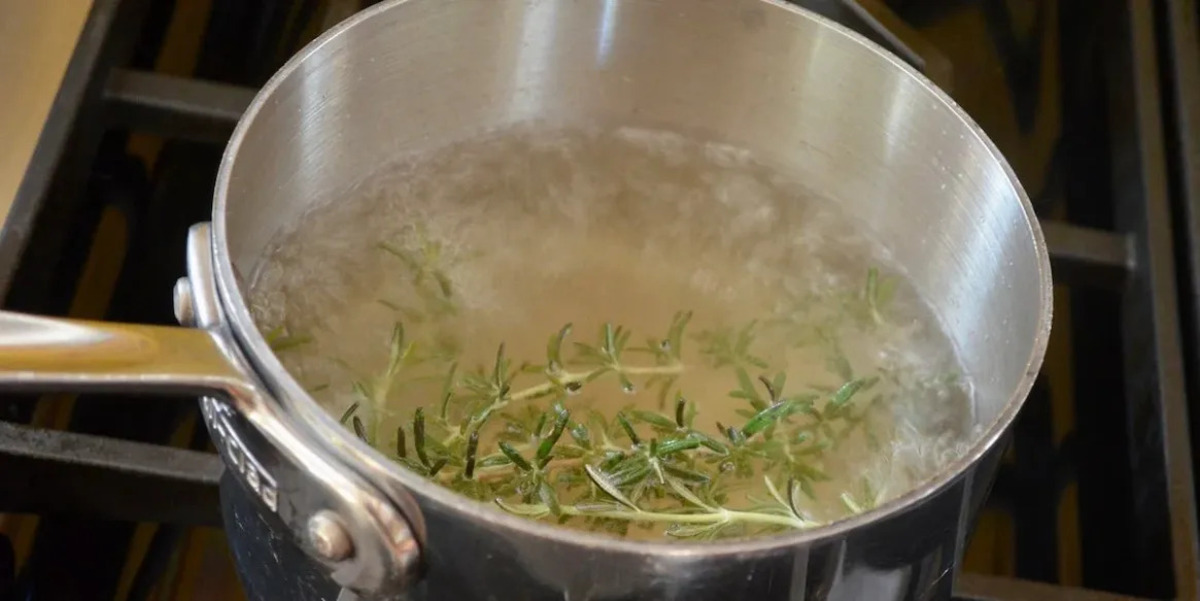Home>Gardening Techniques>Plant Care>How Long Should I Soak Pepper Seeds Before Planting
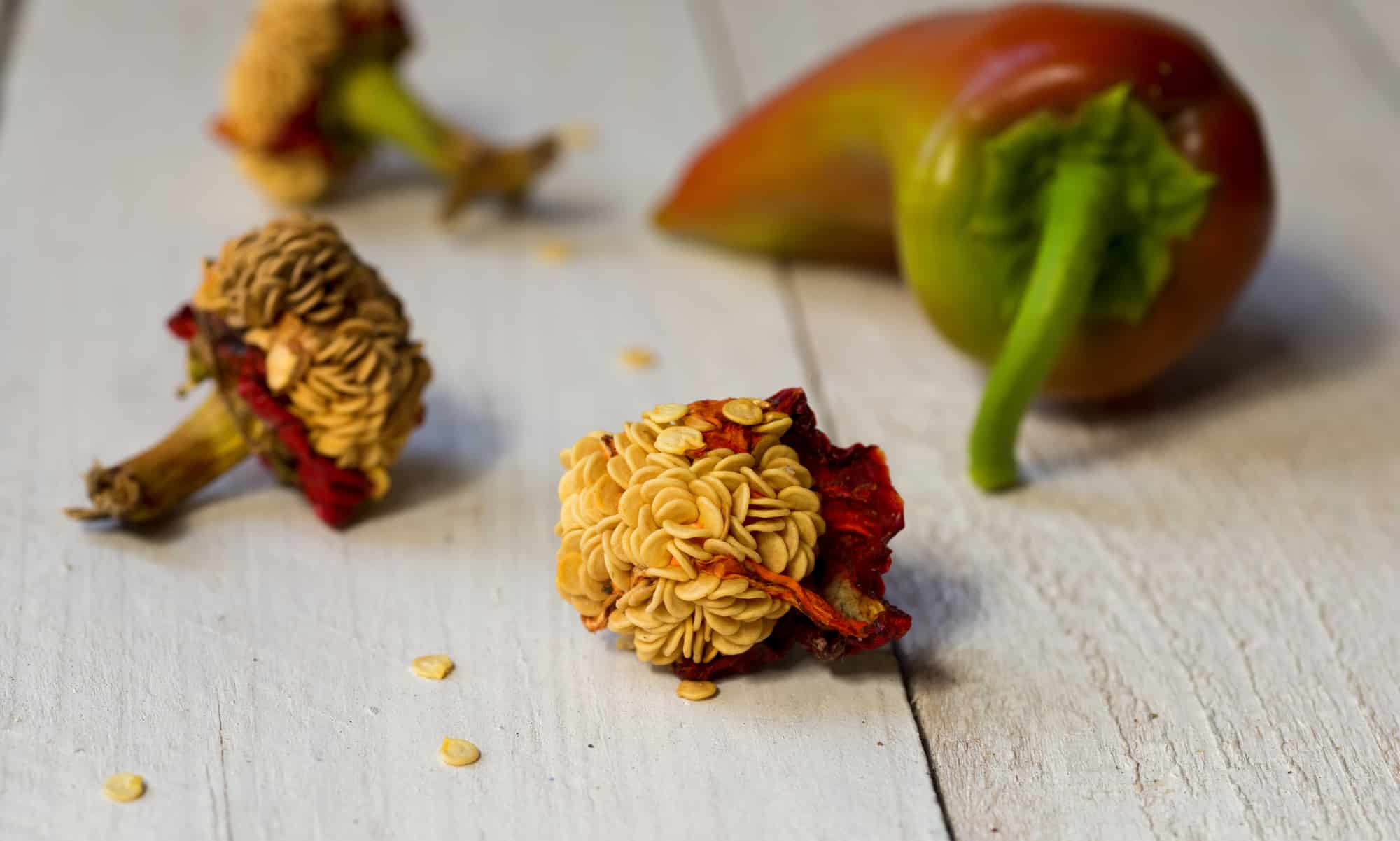

Plant Care
How Long Should I Soak Pepper Seeds Before Planting
Modified: January 22, 2024
Discover how long to soak pepper seeds before planting for optimal plant care. Get expert advice on seed preparation and maximize your pepper plant's growth.
(Many of the links in this article redirect to a specific reviewed product. Your purchase of these products through affiliate links helps to generate commission for Chicagolandgardening.com, at no extra cost. Learn more)
Table of Contents
Introduction
Welcome to the world of pepper plants! Growing peppers can be a rewarding and fulfilling experience, whether you’re a seasoned gardener or just starting out. To ensure the best chances of success, it’s important to give your pepper seeds the best start they can get. One way to do this is by soaking the seeds before planting them in soil.
Soaking pepper seeds is a simple yet effective technique that can help to promote faster germination and stronger seedlings. By immersing the seeds in water for a specific period of time, you can help to break down any protective coatings and encourage the seeds to absorb moisture. This process can also help to soften the seed coat, making it easier for the emerging roots to penetrate the surrounding soil.
While not all gardeners choose to soak their pepper seeds before planting, many find it to be a worthwhile step that can improve overall germination rates. So, if you’re ready to dive into the world of pepper gardening, let’s explore the benefits of soaking pepper seeds and how you can do it effectively.
Benefits of Soaking Pepper Seeds Before Planting
Soaking your pepper seeds before planting offers several advantages that can significantly improve the success of your pepper garden. Let’s delve into some of the key benefits:
- Enhanced germination: Soaking pepper seeds helps to kickstart the germination process. By hydrating the seeds, you provide the necessary moisture for the dormant embryo to wake up and begin growing. This can lead to faster and more uniform germination, giving your pepper plants a head start.
- Improved seed vigor: Soaking seeds can increase their overall vitality. The water penetrates the seed coat, triggering metabolic processes and activating enzymes that aid in the germination process. As a result, the seeds are better equipped to sprout and grow into healthy seedlings.
- Shortened germination time: When you soak pepper seeds, you can often reduce the time it takes for the seeds to germinate. By softening the seed coat and jumpstarting metabolic activity, the seeds are primed for quicker germination. This can be especially helpful if you are eager to see your pepper plants thrive.
- Increased seedling survival rates: Soaking pepper seeds can give your seedlings a stronger start. By providing the necessary moisture to the seeds before planting, you minimize the risk of dry soil hindering their growth. The hydrated seeds are better equipped to develop healthy root systems and absorb nutrients, leading to robust seedlings that are more likely to successfully establish themselves.
- Uniform seedling growth: Soaking pepper seeds can promote more uniform growth among your seedlings. By breaking down the dormancy barriers and providing optimal conditions for germination, you increase the likelihood of even growth across all your planted seeds. This can result in a more visually appealing and balanced pepper garden.
By taking the time to soak your pepper seeds before planting, you can unlock these benefits and set the stage for a thriving pepper garden. But before you embark on the soaking process, it’s important to consider a few key factors.
Factors to Consider Before Soaking Pepper Seeds
Before you dive into soaking your pepper seeds, there are a few important factors to keep in mind:
- Seed age: The age of your pepper seeds can influence their ability to germinate successfully. Fresh seeds, usually within 1-2 years of harvest, generally have higher germination rates. Older seeds may still germinate, but their viability decreases over time. So, if you are using older seeds, soaking them might help to improve germination rates.
- Seed variety: Different pepper varieties have different preferences when it comes to moisture and germination requirements. Some varieties may benefit more from soaking than others. It’s a good idea to research specific recommendations for the pepper variety you are growing to determine if soaking is beneficial.
- Seed size: The size of your pepper seeds can also impact the soaking process. Generally, larger seeds benefit more from soaking as they have a thicker and harder seed coat. Smaller seeds, on the other hand, may not necessarily require soaking as their seed coat is thinner and more permeable.
- Soil and climate conditions: Consider the type of soil and climate conditions in your garden. If you have heavy clay soil or live in a dry climate, soaking can help to jumpstart the germination process and provide the necessary moisture for your seeds to sprout. On the other hand, if your soil and climate are already conducive to germination, soaking may not be necessary.
- Personal preference: Ultimately, the decision to soak your pepper seeds comes down to personal preference and experience. Some gardeners swear by it, while others have had success without soaking. If you are curious and want to experiment, it’s worth giving it a try to see if it improves germination in your particular growing conditions.
By taking these factors into consideration, you can determine whether soaking your pepper seeds is a beneficial step for your specific circumstances. Once you’ve decided to proceed with soaking, there are a few different methods you can use.
Methods for Soaking Pepper Seeds
When it comes to soaking your pepper seeds, there are a few different methods you can choose from. Here are three common approaches:
- Water soaking: This is the most straightforward and commonly used method. Simply place your pepper seeds in a container, such as a glass or bowl, and cover them with room temperature water. Allow the seeds to soak for the recommended duration, usually between 8 to 12 hours. After soaking, drain and rinse the seeds before planting them.
- Paper towel soaking: Another method involves moistening a paper towel or a coffee filter and placing the pepper seeds on top. Fold the paper towel or coffee filter, ensuring that the seeds are enclosed within it. Keep the paper towel or coffee filter damp throughout the soaking period, typically 8 to 12 hours. This method allows you to easily transfer the seeds to the planting medium after soaking.
- Pre-soaking in a germination accelerator: Germination accelerators, such as kelp extract or compost tea, can provide an extra boost to seed germination. You can pre-soak your pepper seeds in the germination accelerator following the instructions provided. This method not only softens the seed coat but also introduces beneficial nutrients to kickstart germination.
Regardless of the soaking method you choose, it’s important to remember a few key points:
- Ensure that your container or paper towel is clean to minimize the risk of mold or bacterial growth.
- Use room temperature water for soaking, as extreme temperatures can harm the seeds.
- Follow the recommended soaking time for the particular pepper variety you are growing. Over-soaking can potentially damage the seeds.
- After soaking, drain and rinse the seeds thoroughly to remove any residual substances.
By selecting a suitable soaking method and following these guidelines, you can prepare your pepper seeds for successful germination. But how long should you soak your pepper seeds? Let’s explore recommended soaking times for different pepper varieties.
Recommended Soaking Times for Different Pepper Varieties
The soaking time for pepper seeds can vary depending on the variety you are growing. While some varieties benefit from longer soaking periods, others may require only a short soak. Here are some general guidelines to help you determine the recommended soaking times for different pepper varieties:
- Hot peppers (e.g., Habanero, Jalapeno, Cayenne): Hot pepper seeds generally have a tougher seed coat and can benefit from longer soaking periods. Soaking these seeds for 8 to 12 hours is usually sufficient to help soften the coat and promote germination.
- Sweet peppers (e.g., Bell peppers, Pimento): Sweet pepper seeds often have a softer seed coat compared to hot peppers. Soaking these seeds for 4 to 6 hours can help to hydrate them and accelerate germination.
- Chili peppers: Chili peppers, which fall between hot and sweet peppers in terms of heat level, generally have a moderate seed coat. Soaking chili pepper seeds for 6 to 8 hours can be an effective duration to facilitate germination.
- Miniature peppers: Miniature pepper seeds, being smaller in size, have a thinner seed coat. These seeds typically require less soaking time, around 2 to 4 hours, to absorb sufficient moisture for germination.
- Specialty or rare pepper varieties: Some specialty or rare pepper varieties may have specific soaking requirements. It is recommended to consult the seed supplier or reputable gardening resources for any specific instructions related to those varieties.
It’s important to note that these recommended soaking times are general guidelines. Factors such as seed age, growing conditions, and personal experience may influence the exact soaking time needed for optimal germination. It’s always a good idea to observe the seeds closely during soaking and adjust the duration as needed.
Now that you are familiar with the recommended soaking times for different pepper varieties, let’s delve into some tips for successful pepper seed soaking.
Tips for Successful Pepper Seed Soaking
To ensure a successful pepper seed soaking experience, here are some essential tips to keep in mind:
- Start with high-quality seeds: Begin with fresh, high-quality pepper seeds. It’s worth investing in seeds from reputable sources to increase the chances of successful germination.
- Follow recommended soaking times: Adhere to the recommended soaking times for the specific pepper varieties you are growing. Longer soaking doesn’t necessarily mean better results and may even harm the seeds.
- Use clean containers and materials: To prevent the growth of mold or bacteria, ensure that the containers and materials you use for soaking are clean and free from any contaminants. Sterilizing the containers beforehand is a good practice.
- Monitor water temperature: Maintain a consistent room temperature for soaking water. Extreme temperatures can damage the seeds, so avoid using water that is too hot or too cold.
- Avoid over-soaking: While soaking helps with seed germination, it’s important not to over-soak the seeds. This can potentially drown them or lead to fungal growth. Follow the recommended soaking times and promptly drain and rinse the seeds afterward.
- Properly drain and rinse the seeds: After soaking, make sure to drain the water completely and thoroughly rinse the seeds. This minimizes the risk of any residues that may interfere with germination or lead to fungal growth.
- Maintain moisture during soaking: If using the paper towel soaking method, ensure that the paper towel or coffee filter remains moist throughout the soaking period. Check periodically and add moisture as needed to prevent the seeds from drying out.
- Label and track: If you are soaking multiple varieties of pepper seeds, label the containers or paper towels accordingly to avoid confusion. Keep track of the soaking times and note any observations that may be helpful for future reference.
- Observe and adjust: Pay close attention to how the seeds respond to the soaking process. If you notice signs of mold, rot, or other issues, make adjustments such as reducing soaking time or changing the method to improve results.
- Combine soaking with other germination techniques (optional): Soaking can be combined with other germination techniques like scarification (scratching the seed coat) or stratification (exposing the seeds to cold temperatures) for certain pepper varieties. Research specific requirements for your chosen varieties before applying these techniques along with soaking.
By following these tips, you can maximize the benefits of soaking and increase the chances of successful germination for your pepper seeds. However, it’s important to be aware of potential risks and take necessary precautions.
Read on to learn about the potential risks and precautions associated with pepper seed soaking.
Potential Risks and Precautions
While soaking pepper seeds can offer numerous benefits, it’s important to be aware of potential risks and take necessary precautions to ensure successful germination. Here are some key considerations:
- Over-soaking: Leaving pepper seeds soaked for too long can lead to waterlogging, which can cause seeds to rot or fungal growth. Adhere to the recommended soaking times and promptly drain and rinse the seeds after soaking.
- Mold and fungal growth: Pepper seeds that are not properly drained or rinsed after soaking can develop mold or fungal growth. Ensure that containers, paper towels, and seeds are clean and free from contaminants to minimize the risk.
- Seed damage during handling: Be careful when handling soaked pepper seeds as they can be delicate and prone to damage. Avoid squeezing or applying excessive pressure that may harm the seeds or disrupt their germination potential.
- Incompatible varieties: Some pepper varieties may not benefit from soaking and may even have reduced germination rates or other adverse effects. Research the specific requirements for the pepper varieties you are growing to determine if soaking is recommended.
- Environmental conditions: Soaking pepper seeds alone may not guarantee successful germination. It’s important to provide the appropriate environmental conditions such as proper temperature, lighting, and moisture levels to support healthy seedling growth.
- Seed storage: If you plan to soak seeds that have been stored for an extended period, their viability may have been compromised. Fresh seeds usually have higher germination rates, so it’s advisable to use seeds within the recommended storage timeframe provided by the supplier.
- Seed health and diseases: Before soaking, inspect the seeds for any visible signs of disease or pest damage. Discard any compromised seeds to avoid introducing potential problems to your garden.
- Experimentation: If you are trying soaking for the first time, it’s recommended to start with a small batch of seeds to assess its effect on germination rates before applying it to your entire seed collection.
By being mindful of these risks and taking necessary precautions, you can mitigate potential problems and increase the chances of successful pepper seed germination through soaking. Remember, every garden and growing condition is unique, so it’s important to observe and adapt to your specific circumstances.
Now that you are equipped with knowledge about the benefits, methods, tips, and precautions for soaking pepper seeds, you can confidently incorporate this practice into your pepper gardening routine.
Happy growing and may your pepper plants flourish!
Conclusion
Soaking pepper seeds before planting can be a valuable technique for enhancing germination rates and promoting healthy seedling growth. By providing ample moisture and breaking down the seed coat, soaking helps to jumpstart the germination process and gives your pepper plants a head start in their growth journey. While not all pepper varieties may require soaking, it’s worth considering for seeds with tougher or thicker seed coats.
Throughout this article, we explored the benefits of soaking pepper seeds, including enhanced germination, improved seed vigor, shorter germination time, increased seedling survival rates, and uniform seedling growth. We also discussed important factors to consider before soaking, such as seed age, variety, size, soil and climate conditions, and personal preference.
Furthermore, we provided various methods for soaking pepper seeds, including water soaking, paper towel soaking, and pre-soaking in a germination accelerator. We emphasized the importance of using clean materials, maintaining optimal moisture levels, and following recommended soaking times to achieve the best results.
Additionally, we shared tips for successful pepper seed soaking, such as starting with high-quality seeds, monitoring water temperature, properly draining and rinsing seeds, and labeling containers or paper towels to avoid confusion. We also highlighted potential risks and precautions, such as over-soaking, mold and fungal growth, seed damage, and the importance of providing suitable environmental conditions for germination.
In conclusion, soaking pepper seeds before planting can be a beneficial practice in your pepper gardening journey. It can contribute to higher germination rates, healthier seedlings, and ultimately, a thriving pepper garden. By considering the specific needs of your pepper varieties, following the recommended soaking times, and implementing proper precautions, you can increase the success of your seedlings and enjoy the abundance of flavorful peppers in your harvest. Happy gardening!

